NODYCON 2021 Mini-Keynotes
Mini-Keynotes
Full interaction of a vibrating elastic structure with an energy source of limited power supply
José Manoel Balthazar
UNESP-Universidade Estadual Paulista, Bauru- SP, Brasil and. Universidade Tecnológica Federal do Paraná, Ponta Grossa, PR, Brasil
E-mail: jmbaltha@gmail.com
This lecture overviews recent developments of some problems related to elastic structures, such as portal frames, considering the full interactions of the vibrating systems, with an energy source of limited power supply (small motors, electro-mechanical shakers), known as non-ideal rotary machines (RNIS). We also present a discussion on nonlinear resonances, including periodic, quasiperiodic, and chaotic characteristics in the steady state motions, and an energy transfer between the energy source and the support structures and a control approach (including sensitivity analysis) to cope with it. Fractional stiffness and damping were also considered. Topics of interest, discussed here, include interdisciplinary approaches and complex nonlinear phenomena in problems encountered in emergent engineering practice.
Bio-sketch of José M. Balthazar
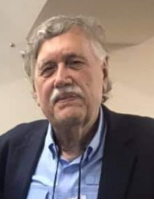
José Manoel Balthazar is a Full Member (Elected) of the Academy of Sciences of the State of São Paulo (ACIESP) and full Professor of nonlinear dynamics and control of UNESP-Universidade Estadual Paulista, Bauru- SP, Brasil and Visiting Professor Universidade Tecnológica Federal do Paraná, Ponta Grossa, PR, Brasil. Prof. Balthazar holds a PhD in Mechanical Engineering from the University of São Paulo, São Carlos Campus (EEUSP-São Carlos, São Paulo) and is a Doctor in Science at UNESP. He holds a master’s degree from the Technological Institute of Aeronautics (ITA, São José dos Campos, SP). He completed postdoctoral degrees in Engineering and Mechanics, Virginia Tech, Blacksburg, Virginia, USA (1994-1995) and (Visiting Professor) at Virginia Tech, Blacksburg, Virginia, USA (2007,2012). The main research project of Prof. Balthazar is called Non-ideal Machine Theory, whose most frequent terms of this research are Nonlinear Dynamics, Chaos, Control of Nonlinear and Chaotic Systems, Electromechanical Systems (in Macro, MEMS and NEMS scales), Smart Materials, Energy Transfer between Oscillators and Energy Collection of the Environment.
Planar nonlinear dynamic analysis of cable-stayed bridge considering support stiffness
Houjun Kang
College of Civil Engineering and Architecture, Guangxi University, Nanning 530004, China
E-mail: khjun@hnu.edu.cn
Support stiffness is one of important factors on structure dynamics. Considering the vertical support stiffness, a multi-cable-stayed shallow-arch model of the cable-stayed bridge is established. Its differential equation governing the planar motion of cables and the shallow arch and the boundary conditions are derived by Hamilton’s principle. Firstly, the in-plane free vibration of the system is explored in order to find the modal functions and the possible internal resonances of nonlinear dynamics. Then, the 1:2:2 internal resonance among the different modes of the shallow arch and two cables are investigated by the multiple time scale method and pseudo arclength algorithm. Meanwhile, the frequency-/force-response curves are used to explore the nonlinear behaviours of the system, especially the influence of vertical support stiffness, excitation frequency and amplitude on the internal resonance of the system is considered. To a certain extent, the support stiffness can reduce the response amplitudes of members by absorbing some energy from excitation.
Bio-sketch of Houjun Kang
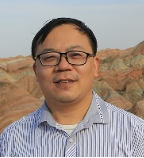
Houjun Kang has a Ph.D. in Bridge and Tunnel Engineering (2007) and a Bachelor in Engineering Mechanics (2001) from Hunan University, China. He is a professor of dynamics and control, in the College of Civil Engineering and Architecture, Guangxi University. He directs a Center for Structural Dynamics and Control. He is also the editorial director of the Chinese Journal of Dynamics and Controland a member of nonlinear dynamics and motion stability group of the Chinese Society of Theoretical and Applied Mechanics. He has published over 80 archival publications in dynamics and control. His research interests include dynamics, vibrations and control, and damper and reduced-order modeling.
Dynamics and wave manipulations of gyroscopic metamaterials
Xiao-Dong Yang
Faculty of Materials and Manufacturing, Beijing University of Technology
Beijing, China
E-mail: jxdyang@163.com
We present theoretically and experimentally a prototype of gyroscopic metamaterial composed by chain or planar network of gyroscopes, which permits circular polarization and dynamic tunability when manipulating mechanical waves.
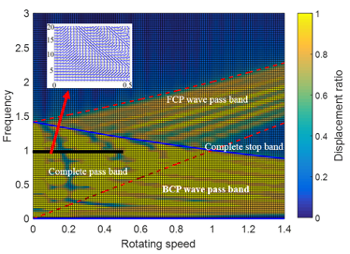 One-dimensional gyroscopic chain, and two-dimensional networks with both angular and rectangular cells have been investigated. Three types of pass bands have been found by tuning the gyroscope angular momentum: higher and lower frequency parts transmits different circular polarized waves with opposite directions, and the middle part transmit both. Pass bands of scalable frequency ranges for forward circular polarized and backward circular polarized waves can be designed by such dynamic tunability. We classified the gyroscopic metamaterials into two types: free type and constrained type. It is found the two types show opposite circular polarization direction. The rotation effect to the linearly polarized mechanical waves has also been found in the band transmitting both forward and backward circular polarized waves, similar to the Faraday rotation effect of magneto-optical materials to the linearly polarized light.
One-dimensional gyroscopic chain, and two-dimensional networks with both angular and rectangular cells have been investigated. Three types of pass bands have been found by tuning the gyroscope angular momentum: higher and lower frequency parts transmits different circular polarized waves with opposite directions, and the middle part transmit both. Pass bands of scalable frequency ranges for forward circular polarized and backward circular polarized waves can be designed by such dynamic tunability. We classified the gyroscopic metamaterials into two types: free type and constrained type. It is found the two types show opposite circular polarization direction. The rotation effect to the linearly polarized mechanical waves has also been found in the band transmitting both forward and backward circular polarized waves, similar to the Faraday rotation effect of magneto-optical materials to the linearly polarized light.

Figure 1: Above: band gaps, Faraday rotation effect, and numerical simulations of one-dimensional gyroscopic metamaterial. Below : experimental setup.
Bio-sketch of Xiao-Dong Yang
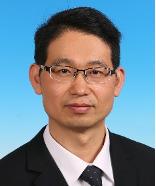
Xiao-Dong Yang received his B.S. degree in Aero-engine Engineering from Shenyang Aerospace University, Liaoning in 1999, his M.S. degree in Mechanical Engineering from the same university in 2002, and his Ph.D. in Mechanics from Shanghai University in 2005. From 2005 to 2012, he worked in Shenyang Aerospace University as a lecturer, an associate professor and a full professor. He joined the School of Mechanical Engineering and Applied Electronics, Beijing University of Technology as a professor in 2012. He is one of the authors of over 100 archival publications. His research interests include vibration of gyroscopic materials, axially moving continua, rotating continua, and vibration control.
Nonlinear forced vibration of metal foam rectangular plates reinforced with graphene platelets
Yan Qing Wang
Department of Mechanics, Northeastern University, Shenyang, China
E-mail: wangyanqing@mail.neu.edu.cn
Primary, superharmonic, and subharmonic resonances of graphene platelet (GPL) reinforced metal foam (GPLRMF) rectangular plates are investigated. Various GPL distributions and porosity distributions are considered. Governing equations and general boundary conditions are obtained via Hamilton’s principle. Introducing the stress function, ordinary differential equations of the nonlinear system are received by using the Galerkin method. Finally, frequency-response relationships are solved by applying the multiple scale method. The effects of the porosity coefficient, the weight fraction of GPL, the amplitude of the excitation, and the damping ratio on frequency-response curves are studied. Results show that GPLRMF plate shows the hardening nonlinearity in primary and superharmonic resonances.
Bio-sketch of Yan Qing Wang
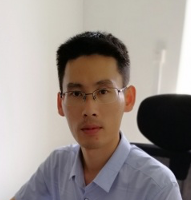
Yan Qing Wang graduated with Ph.D. (2013), M.Sc. (2007), and BSc (2005) in Engineering Mechanics from Northeastern University, China. From 2016-2017, he is a post-doctoral fellow at University of Toronto, Department of Mechanical & Industrial Engineering. Now he is a Full Professor of the Department of Mechanics at Northeastern University and directs the center of structural dynamics. He received the outstanding author Award of Applied Mathematics and Mechanics (English edition) (2018). He has published over 80 papers including 60 journal papers. His research interests include dynamics, nonlinear vibrations, plates and shells, and functionally graded structures. He currently serves on several editorial boards including International Journal of Computational Materials Science and Engineering, Acta Mechanics Sinica, etc.
Nonlinear thermal vibration of typical nanostructures
Lifeng Wang
State Key Laboratory of Mechanics and Control of Mechanical Structures, Nanjing University of Aeronautics and Astronautics, 210016, Nanjing, China
E-mail: walfe@nuaa.edu.cn
The thermal induced vibration of typical low dimensional nanostructures is investigated by using molecular dynamics (MD) simulation and the continuums models. The nonlinear dynamics equations for vibrations of the typical nanostructures are established, with the geometric nonlinearity of the large deformation taken into account. The thermal vibration of nanostructures is predicted by numerically integrating of the dynamic equations of the nonlinear beam and plate models via the-fourth-order-Runge-Kutta algorithm. The Root of Mean Squared (RMS) amplitudes and the stationary probability densities of the thermal vibration of the nanostructures are obtained via MD simulations and the continuum models. In addition, the effects of van der Waals force on the nonlinear thermal vibration of nanostructure are also investigated.
Bio-sketch of Lifeng Wang
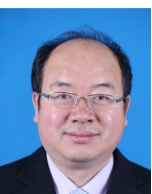
Prof. Lifeng Wang received his Ph.D. from Nanjing University of Aeronautics and Astronautics, China, in 2005. He is currently a professor at State Key Laboratory of Mechanics and Control of Mechanical Structures in Nanjing University of Aeronautics and Astronautics. His research interests focus on dynamics problems in nanostructures and metamaterials. He has authored and coauthored 70 journal papers. He is the recipient of the Excellent Doctoral Dissertation Award of China in 2009, the Second Prize of National Natural Science Award of China(Achiever No.5) in 2012 and the Young Chang Jiang Scholars Programme in 2015. He was granted the Fund for Excellent Youth Researchers from NSFC in 2015 and the National Science Fund for Distinguished Young Scholars of China in 2019. He is an Editor of Acta Mechanica Sinica and Acta Mechanica Solida Sinica.
Multi-mode vortex-induced vibration and its suppression of long-span suspension bridges
Xugang Hua
College of Civil Engineering, Hunan University, China
E-mail: cexghua@hnu.edu.cn
Vortex-induced vibration is a kind of fluid-structure interaction. It may occur at relatively low wind velocity, and is therefore an important design concern for bridges. In 2020, three major suspension bridges in China experienced severe vortex-induced vibrations, which attracted public concern. Suspension bridges have closely-spaced vertical vibration modes, and each mode may develop VIV in turn with increase of wind velocity. The evolution of VIV amplitude of each mode needs to be quantified, as higher mode tends to give rise large acceleration. In this talk, we discuss the modelling and prediction of VIV amplitude of vertical modes of suspension bridges both from numerical and experimental aspects. A new multi-supported aeroelastic model is proposed to reproduce the closely-spaced mode of suspension bridges and to predict the VIV amplitude as well. Moreover, the suppression of multi-mode VIV will also be addressed.
Bio-sketch of Xugang Hua

Xugang Hua received a Ph.D in Civil and Structural Engineering from Hong Kong Polytechnic University, a M.Eng and a B.Eng in Civil Engineering from Central South University. He is currently a Professor of College of Civil Engineering, Hunan University and directs the Key Laboratory for Wind and Bridge Engineering in Hunan Province, China. He was awarded the National Science Fund for Distinguished Young Scholars in 2020 and the National Outstanding Youth Science Fund in 2014. He is a member of ASCE. He has published over 100 journal articles, 2 technical monographs and 6 patents and edited 2 standards. His research interests include wind-induced vibration and vibration suppression of bridges, structural health monitoring and condition assessment of bridges and structural dynamics of bottom-fixed and floating offshore wind turbines
